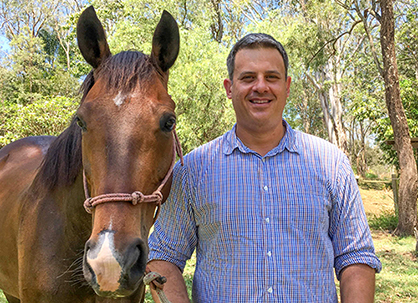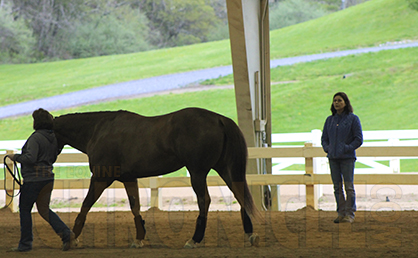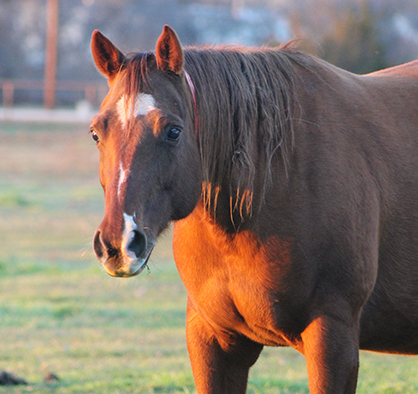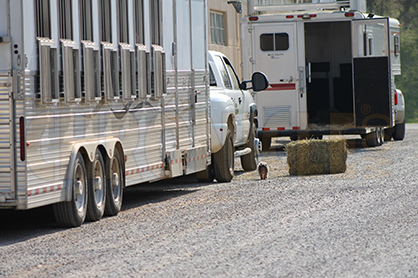New Treatments For Laminitis, the Disease that Felled Barbaro
May 5, 2017 Comments Off on New Treatments For Laminitis, the Disease that Felled Barbaro
“We’ve done a lot of good work over the last 10 years, since Barbaro,” says van Eps. “We know now that there are different mechanisms that can lead to the disease, and we’re working out ways to prevent or ameliorate the different forms.”
Continue reading …Transferring Immunity: Mare Colostrum Studied
May 4, 2017 Comments Off on Transferring Immunity: Mare Colostrum Studied
Researchers believe pro-inflammatory proteins help stimulate a foal’s immune system to function appropriately, helping to activate immune system memory, rather than directly fighting infection.
Continue reading …A Horse at Home is Still at Risk For Ulcers
May 3, 2017 Comments Off on A Horse at Home is Still at Risk For Ulcers
Horses that stay home or rarely compete are not immune to stomach ulcers. Cheramie cites these situations as examples of what can cause them including: Light training, Short-term travel, Trailering, Change in routine, Change in feed schedule, Limited turnout or grazing, or Lay-up due to sickness or injury, Radio in the barn, or Social regrouping.
Continue reading …The True Story of a Chain Lead Shank Tragedy
May 2, 2017 Comments Off on The True Story of a Chain Lead Shank Tragedy
“She ran the snap of the chain through the bottom ring of the halter and snapped it back on itself, doubling the chain, as most people do in order to shorten the chain and make it stronger when the chain is not needed over the horse’s nose or under its chin… Karen had no idea that she had created a noose for her horse and by letting him graze, she was setting the trap.”
Continue reading …Helping an Orphaned Foal Requires Quick Thinking
May 2, 2017 Comments Off on Helping an Orphaned Foal Requires Quick Thinking
Unfortunately, the nurse mare didn’t take to the new filly either. So in order to provide the foal with the necessary nutrition, an Igloo cooler was retrofitted with a sheep nipple to allow for nursing. Finally, a bit of success! The filly took to nursing from the cooler quickly, allowing for one big hurdle to be overcome.
Continue reading …Does My Senior Horse Have Special Vaccination Needs?
April 27, 2017 Comments Off on Does My Senior Horse Have Special Vaccination Needs?
It’s a common misconception that senior horses, having received vaccinations for years, are already protected and haven’t the need for annual vaccinations.
Continue reading …Antimicrobial Resistance- A Global Problem For Animals and Humans
April 27, 2017 Comments Off on Antimicrobial Resistance- A Global Problem For Animals and Humans
Unfortunately, on a global scale, we’ve seen the overuse and misuse of life-saving medications in both humans and animals. Antibiotic resistance is a naturally occurring phenomenon, but the overuse of these medications has significantly accelerated AMR selection and spread. As a result, the world is rapidly reaching a point where we are in danger of seeing more people dying from infections due to antibiotic resistance than from cancer,” Dr Page said.
Continue reading …Equine Forum Paper on Traceability in the Equine Industry
April 25, 2017 Comments Off on Equine Forum Paper on Traceability in the Equine Industry
Traceability in the equine industry has been a highly-discussed topic for several years, with varying progress across the country to move forward with a national infrastructure. NIAA sought to establish consensus on the parameters of a national equine identification program, and provide recommendations for advancing equine identification technologies and electronic data capture methodologies by involving stakeholders from across the horse industry to get a broad perspective on the state of today’s technology and its uses.
Continue reading …Vets Welcome Government’s Final Report on Hendra Vaccine
April 25, 2017 Comments Off on Vets Welcome Government’s Final Report on Hendra Vaccine
The government has not called for legislated mandatory Hendra vaccination, as there is no precedent for this in human and animal health in Queensland. The government has however endorsed a recommendation of the AVA for the right of horse event organizers to insist on mandatory vaccination as a condition for entry into competition.
Continue reading …Video: Getting a Leg Up on Equine Arthritis
April 21, 2017 Comments Off on Video: Getting a Leg Up on Equine Arthritis
Spotted a few familiar faces in this Merial video about how LEGEND treats joint dysfunction due to synovitis associated with equine osteoarthritis!
Continue reading …







